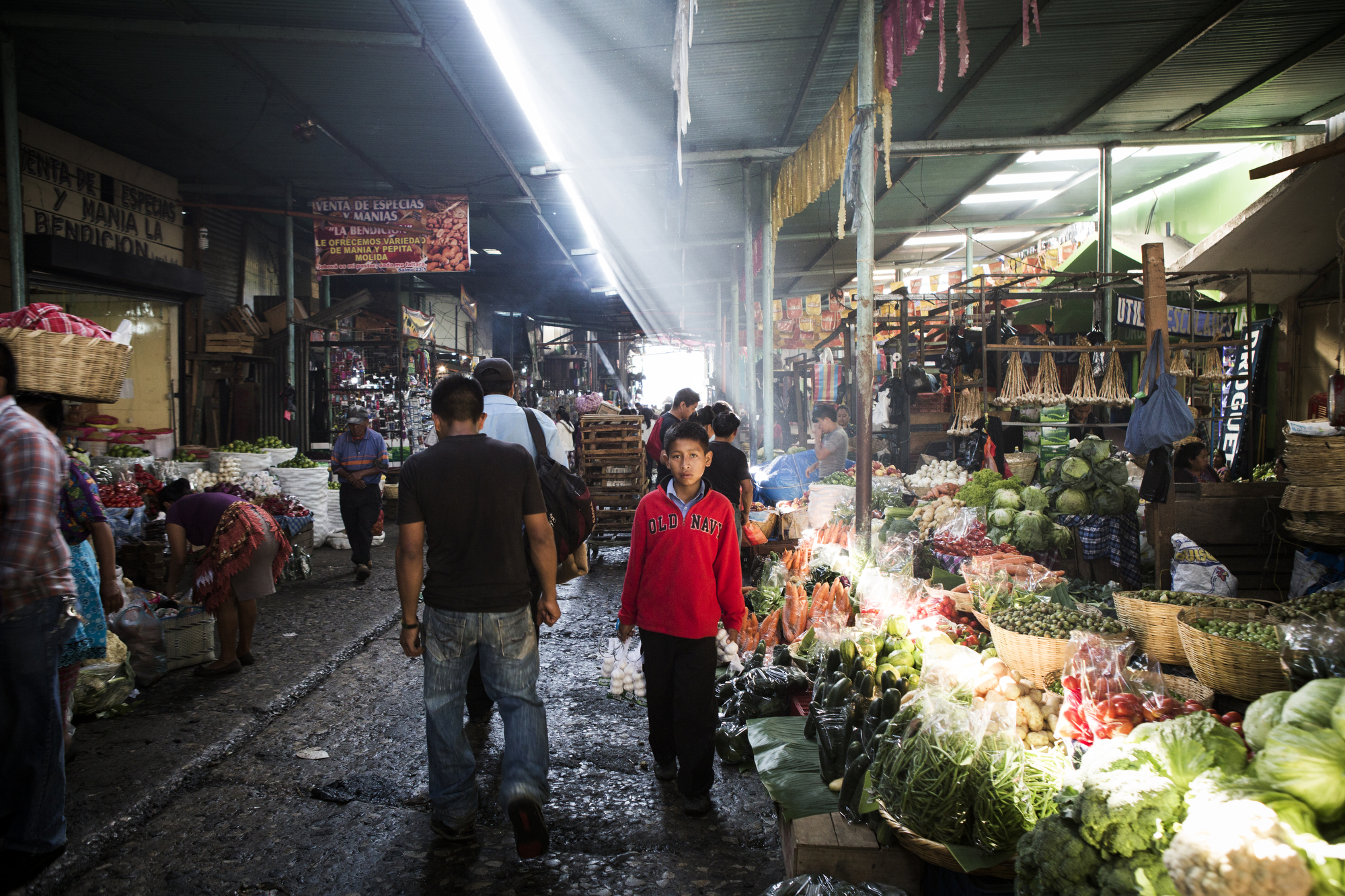
Children Do Not Migrate, They Flee • Katie Orlinsky
When a massive influx of Central American children streamed across the U.S.-Mexican border in 2014, it sparked a political crisis, and a heated debate about the causes of this “surge.” U.S. politicians argued that the children were coming merely for economic reasons (that is, simply to take American jobs), rather than face the complicated reality that we have a refugee crisis on our very own doorstep.
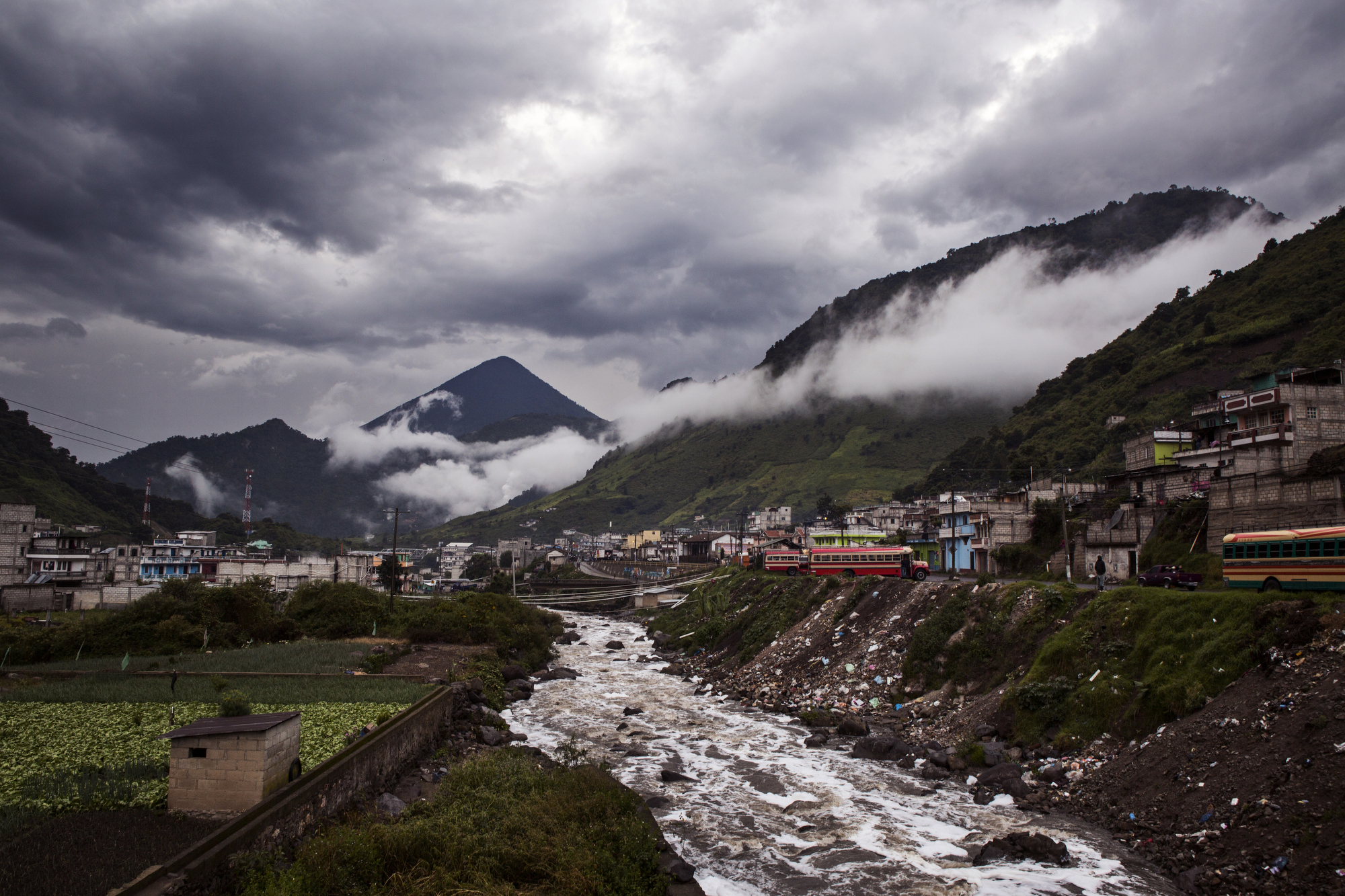
A river runs through the town of Los Duraznales in Quetzaltenango, Guatemala. Quetzaltenango has one of the highest levels of child migration in the country; mostly economic refugees with poverty levels in the region as high as 93 percent. In addition, a large population of Guatemalans from the area are already living in the United States and Mexico.
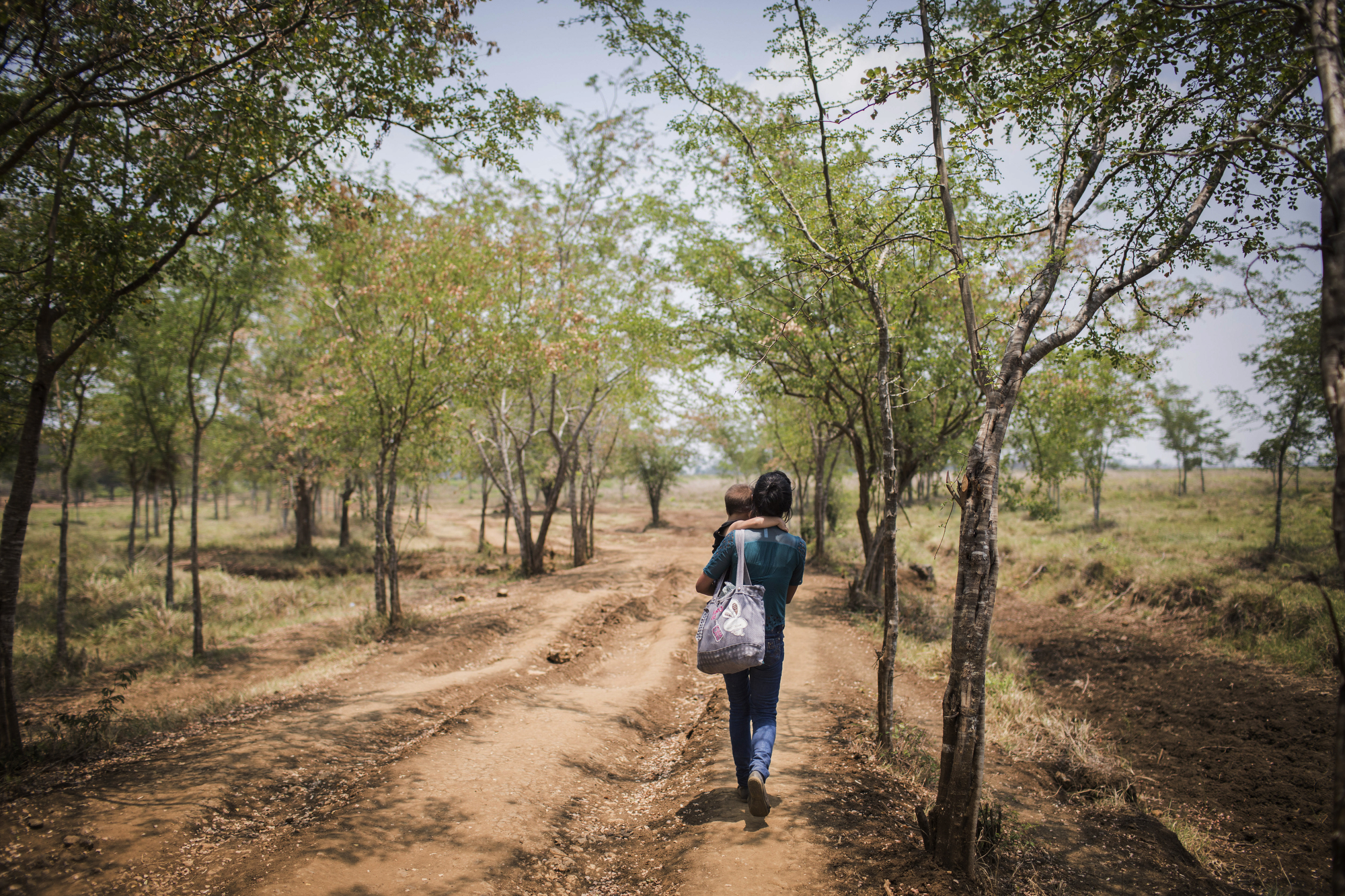
Miriam Gonzalez Ramirez and her baby Carlos Jair Gonzalez Ramirez from Honduras travel through a ranch after crossing the Guatemala/Mexico border.

Paula does not go to school and instead works washing clothing with her female family members in the town of Los Duraznales in Quetzaltenango, Guatemala. Quetzaltenango has one of the highest levels of child migration in the country; mostly economic refugees with poverty levels in the region as high as 93 percent. In addition, a large population of Guatemalans from the area are already living in the United States and Mexico.
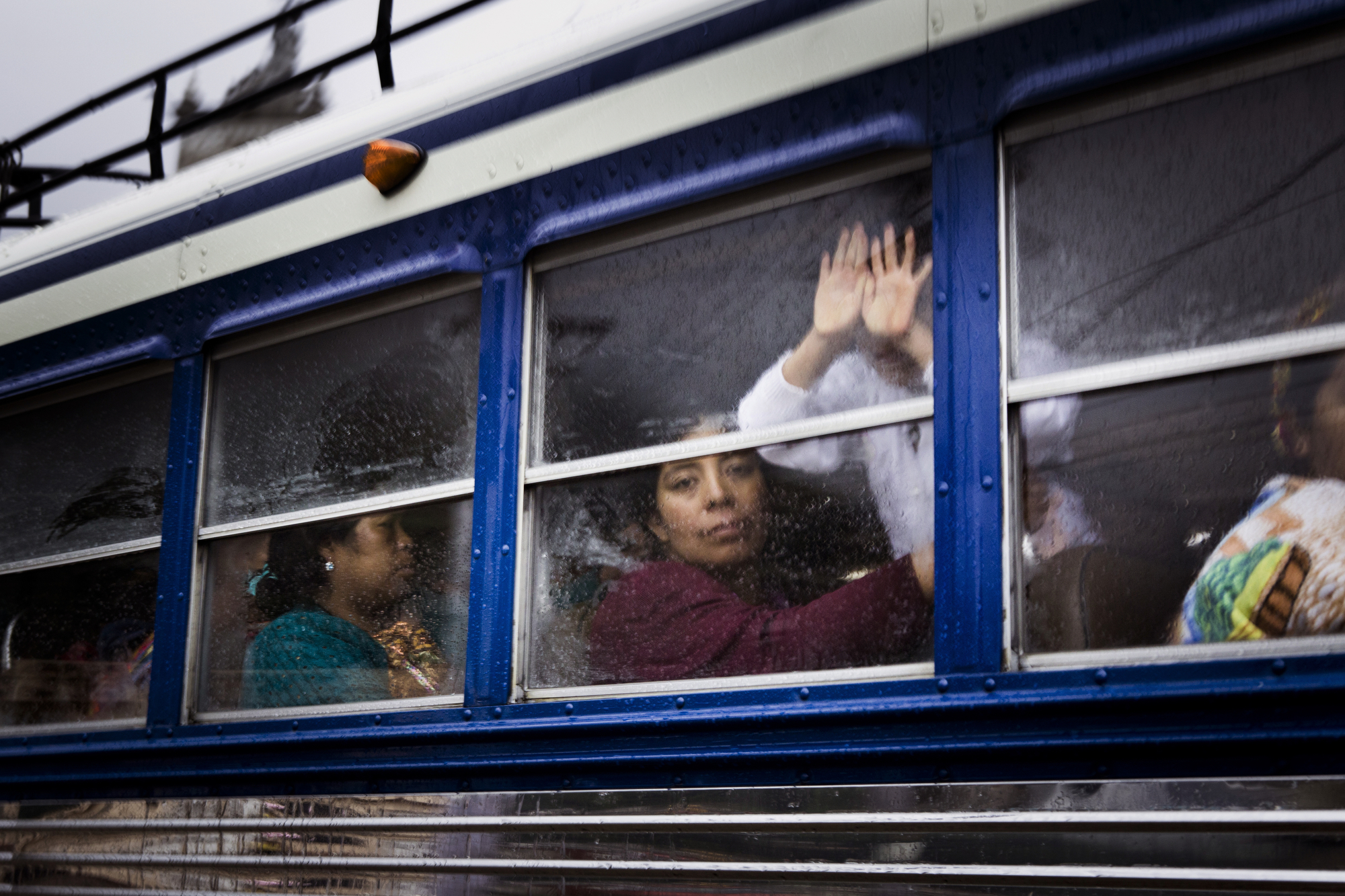
A bus in Los Duraznales, Quetzaltenango, Guatemala. Quetzaltenango has one of the highest levels of child migration in the country; mostly economic refugees with poverty levels in the region as high as 93 percent. In addition, a large population of Guatemalans from the area are already living in the United States and Mexico.
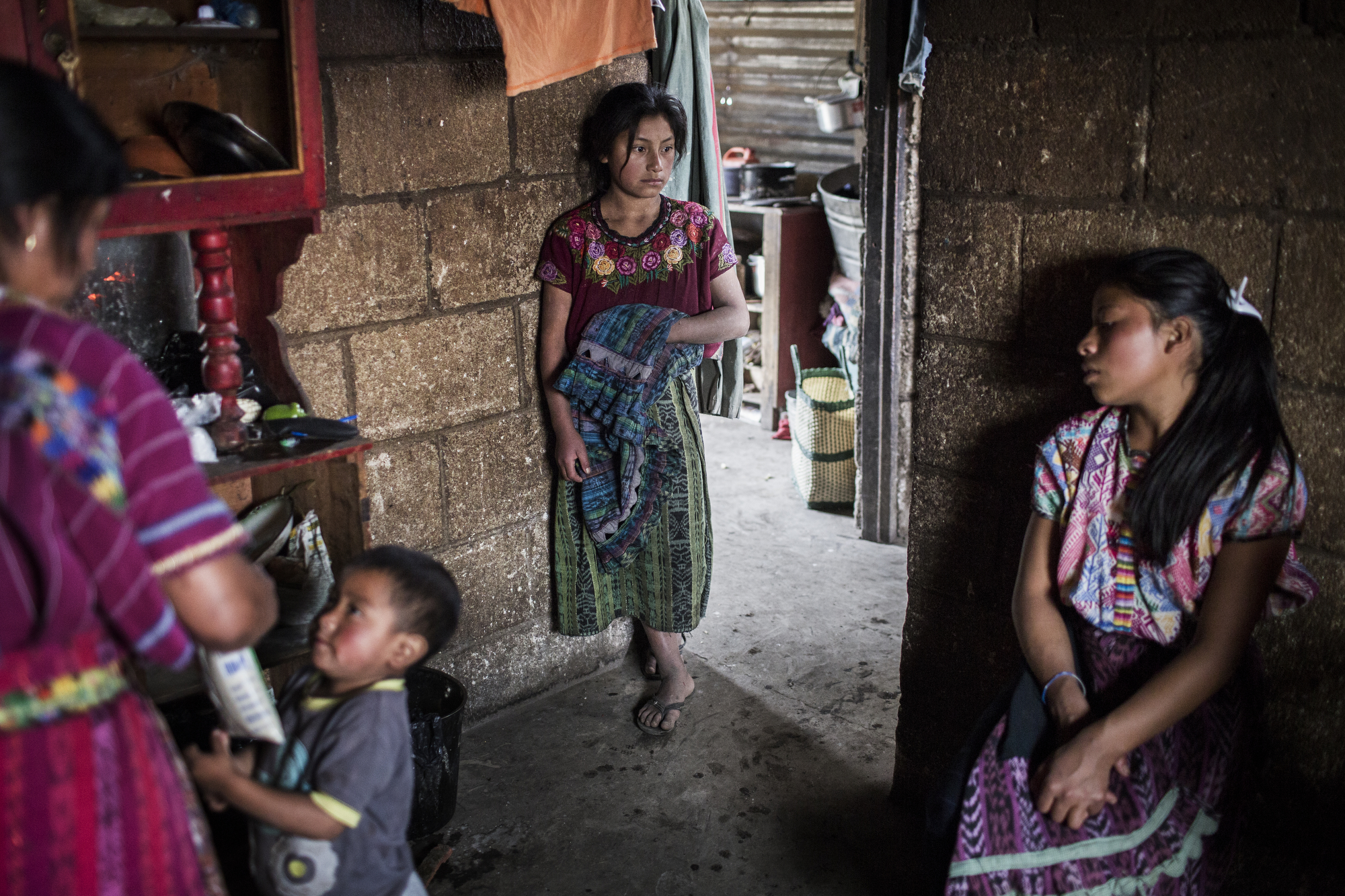
Romina Alonso Lorenzo, 12, and other family members at her aunt's home in Concepcion Chiquirichapa in Quetzaltenango, Guatemala. She is one of the four orphan Alonso Lorenzo sisters, one of whom who is fourteen years old and has recently migrated to the United States where she works to help support her family. The other three sisters live with their aunt in a cramped two room home. All three of the sisters hope to migrate to the United States as soon as they can. The region of Quetzaltenango, Guatemala has one of the highest levels of child migration in the country; mostly economic refugees with poverty levels in the region as high as 93 percent. In addition, a large population of Guatemalans from the area are already living in the United States and Mexico.
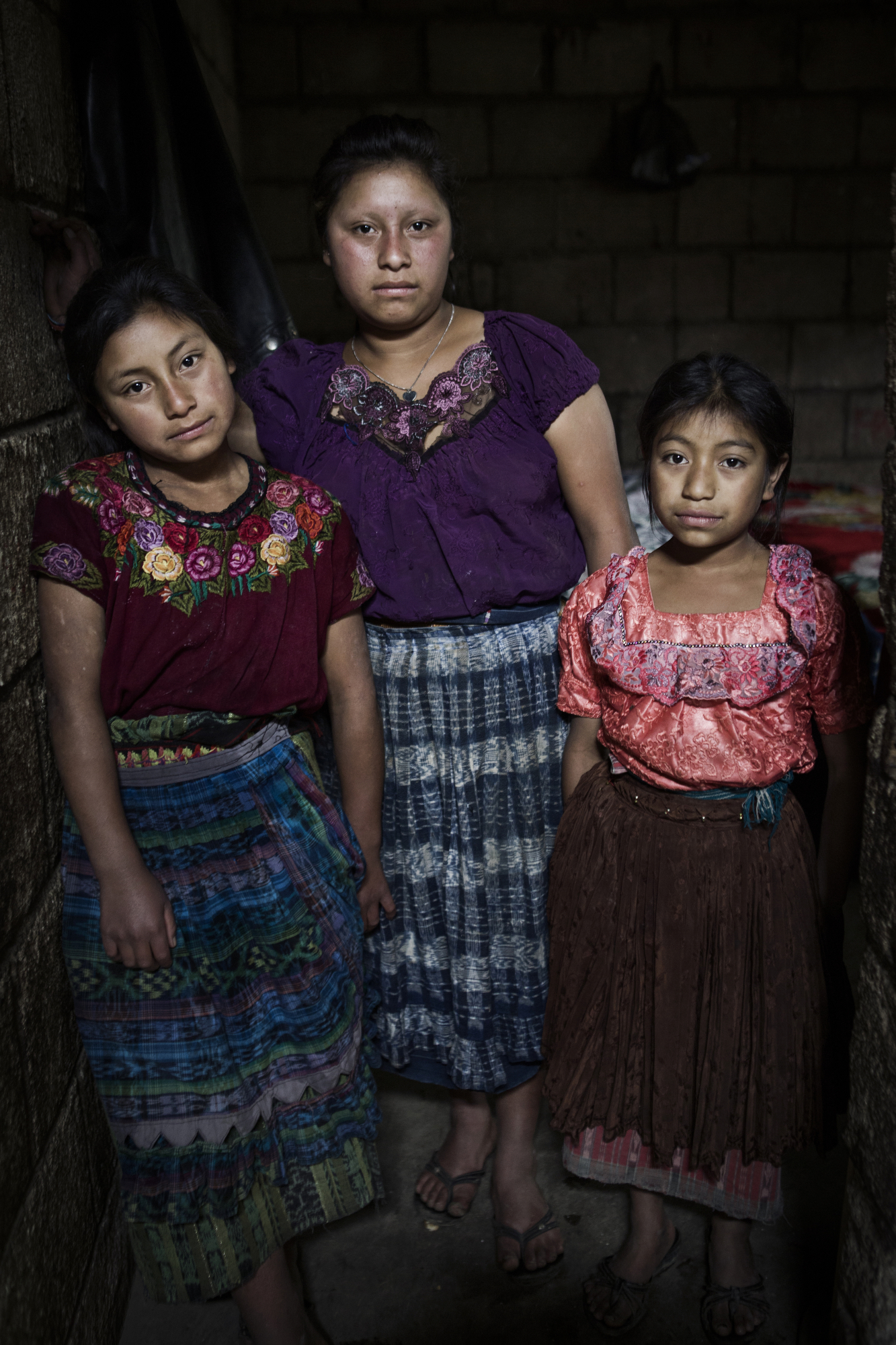
The Alonso Lorenzo sisters (L to R) Romina, 12, Alysa Karina, 16, and Isabel, 8 at their aunt's home in Concepcion Chiquirichapa in Quetzaltenango, Guatemala. The sisters are orphans and their fourteen year old sister recently migrated to the United States where she works to help support all three of them. They currenty live with their aunt in a cramped two room home, and all three of the sisters hope to migrate to the United States as soon as they can. The region of Quetzaltenango, Guatemala has one of the highest levels of child migration in the country; mostly economic refugees with poverty levels in the region as high as 93 percent. In addition, a large population of Guatemalans from the area are already living in the United States and Mexico.
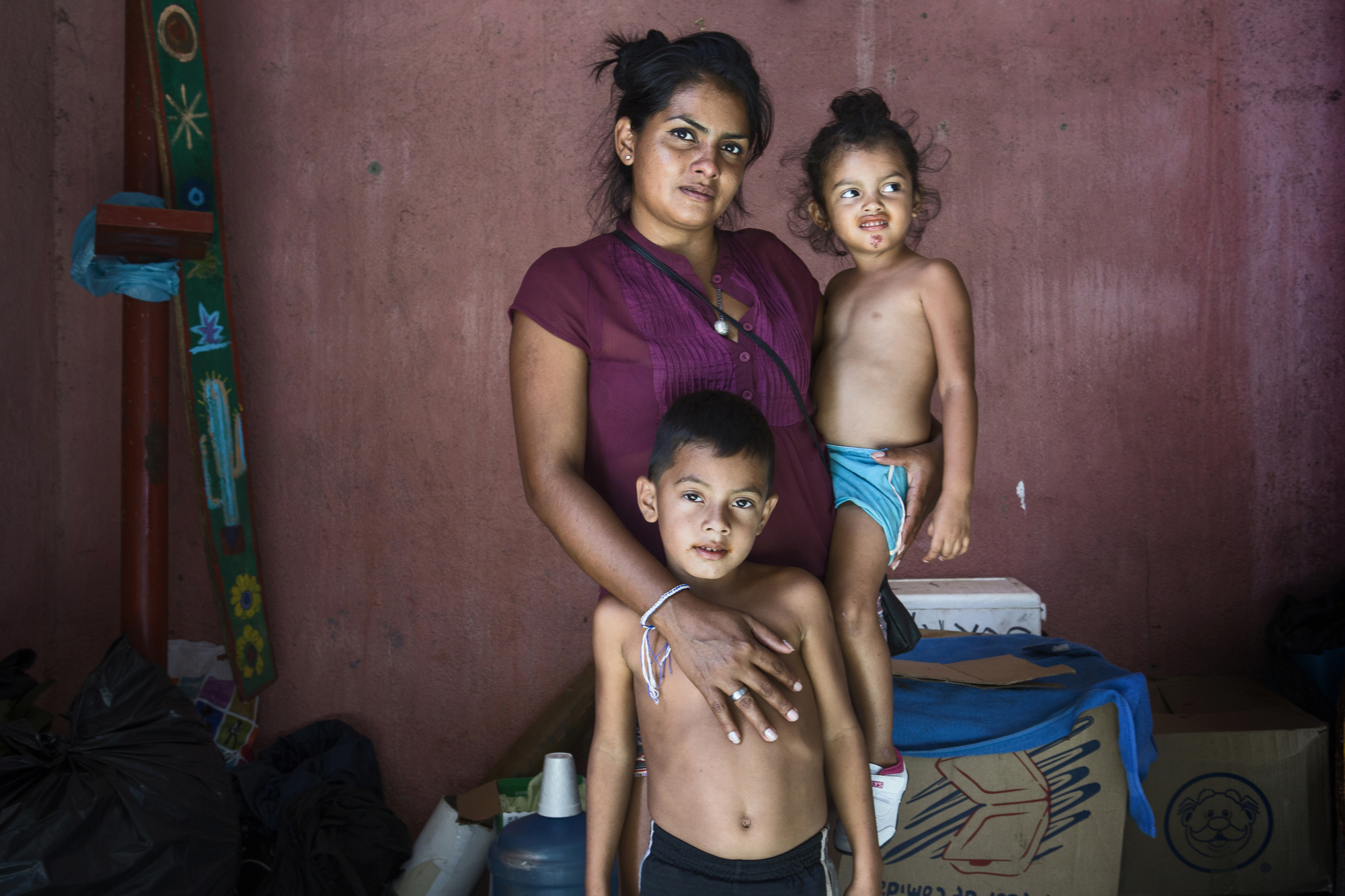
July Elizabeth Pérez, 32, with one of her daughters, three year old Kimberly Julieth Medina, and her only living son, six year old Luis Danny Pérez, at the Hermanos en el Camino migrant shelter in Ciudad Ixtepec, Mexico. Pérez and her family were forced to flee Honduras after her 14-year-old son Anthony Jalibeth Pacheco was murdered by gangs last year.
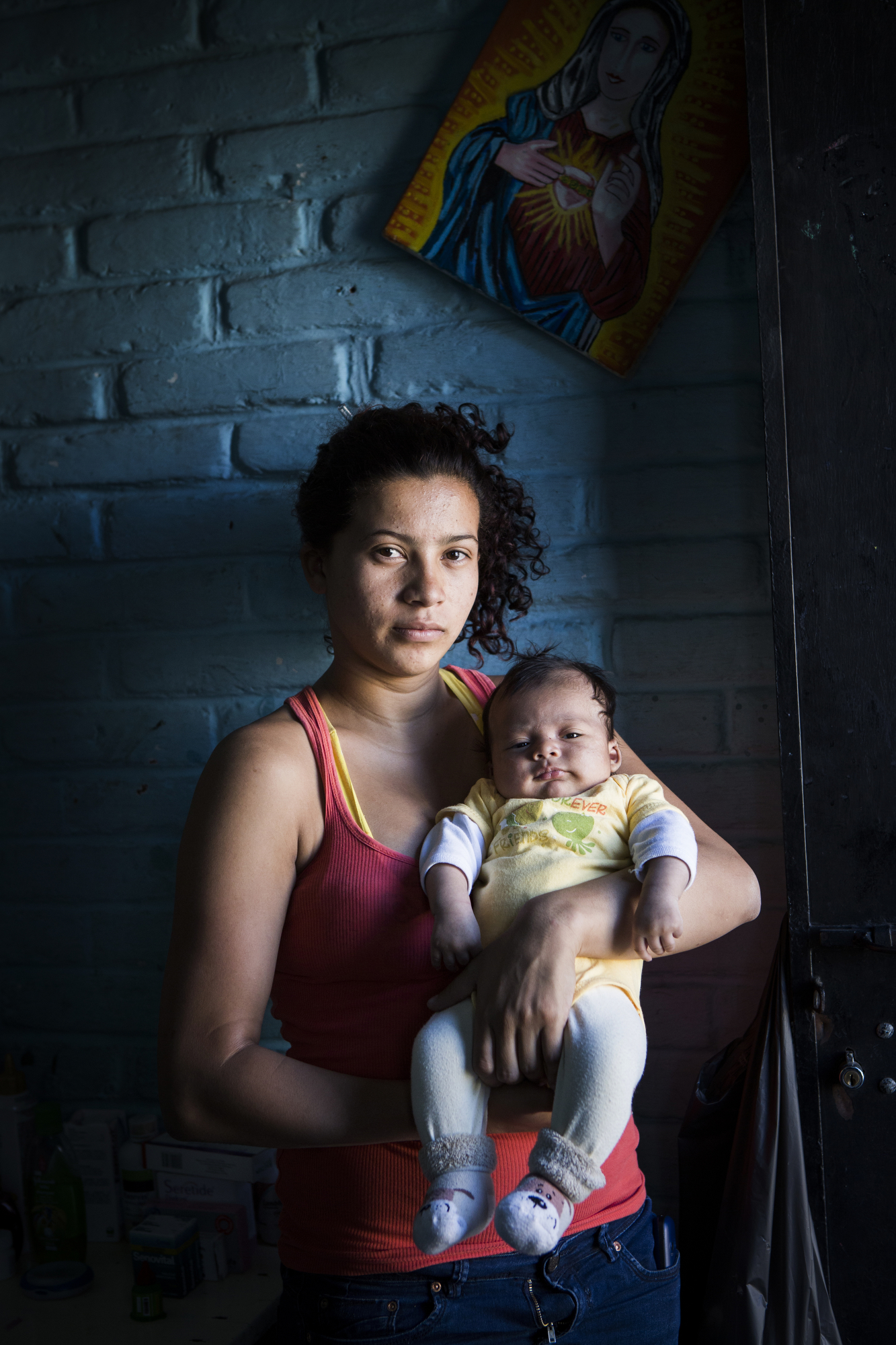
Isaura Ortega and her baby at Cafemin migrant shelter in Mexico City. Her family fled violence in Guatemala City.

Willmer Villatoro, 16 and his brother Alexis Villatoro, 18, at the Hermanos en el Camino migrant shelter in Ciudad Ixtepec, Mexico. They fled gangs in El Salvador after Willmer was shot for not joining.

13-year-old Adonias works selling garlic at the largest market in Guatemala City "El Mercado Terminal."
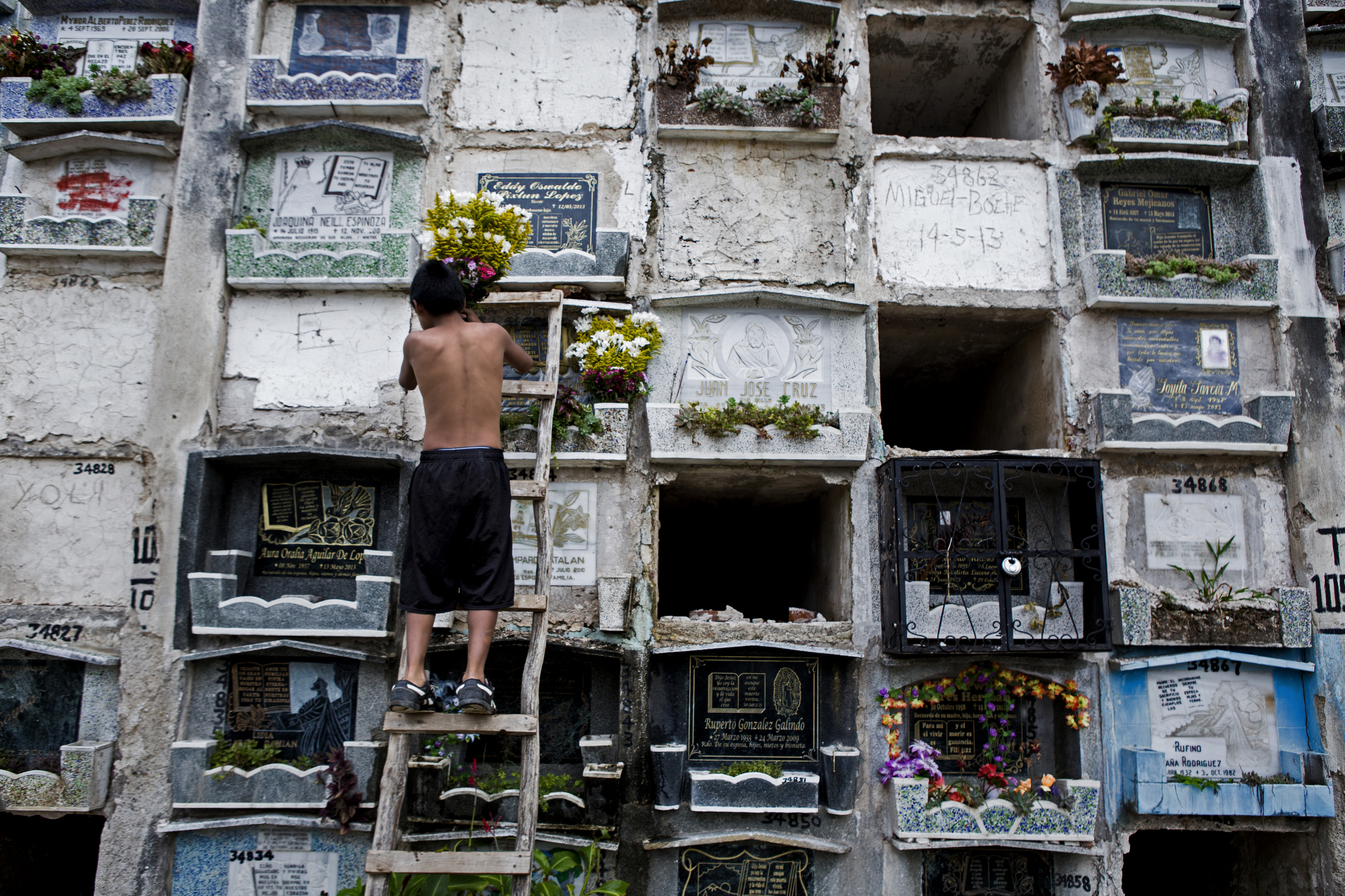
Jonathan, 13, works in the Guatemala City Cemetery cutting and arranging flowers for family members of the deceased. He says he goes to school in the afternoons.
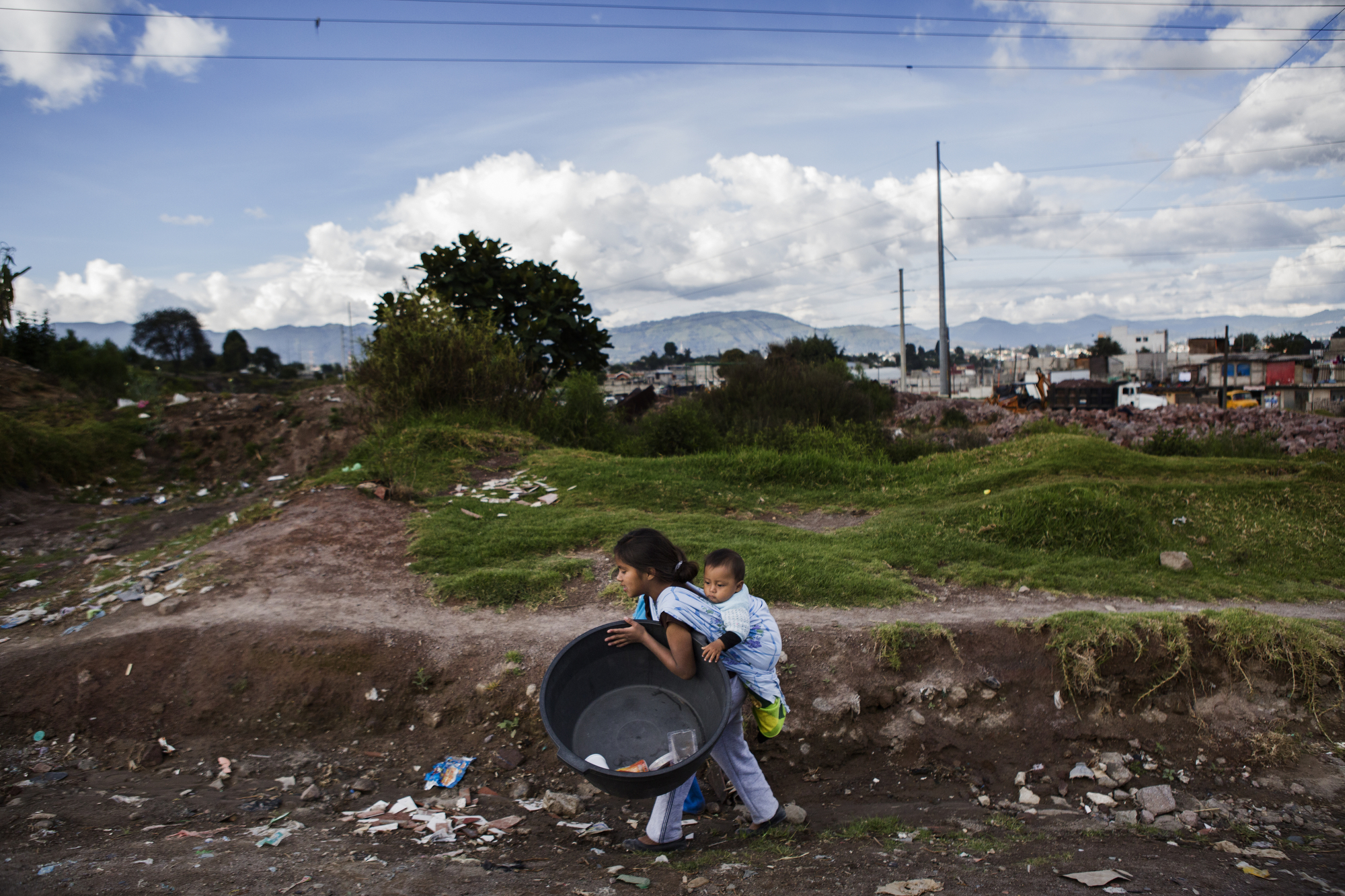
A child and her little brother gather recyclable materials by the side of the road in Quetzaltenango, Guatemala. The area has one of the highest levels of child migration in the country; mostly economic refugees with poverty levels in the region as high as 93 percent. In addition, a large population of Guatemalans from the area are already living in the United States and Mexico.
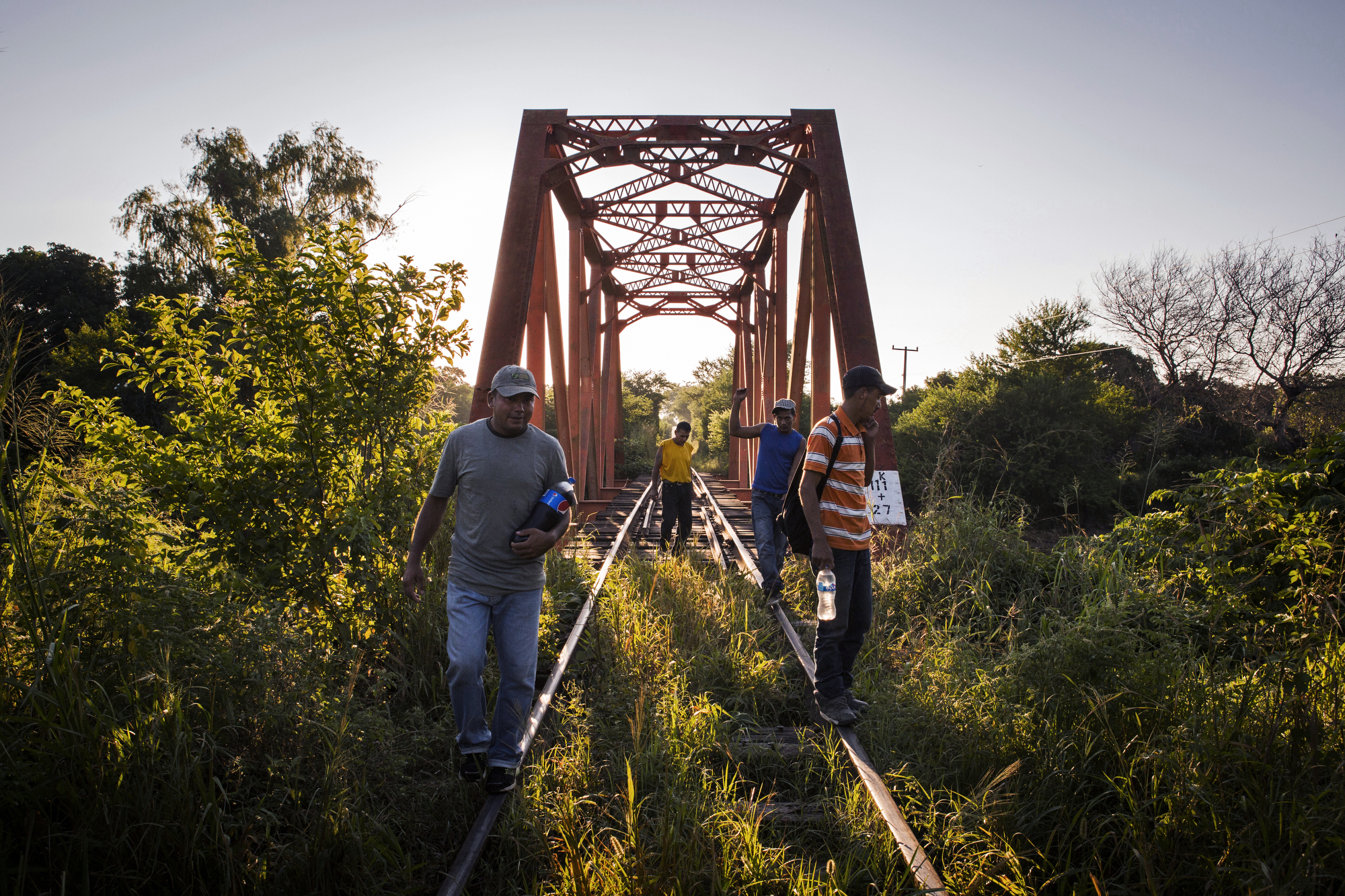
Migrants take off heading North in Chahuites, Mexico, one of the most dangerous areas along the southern migrant trail. The trains in the area are recently highly monitored by officials and migrants forced to walk hundreds of kilometers through the woods where they are preyed on by criminals.
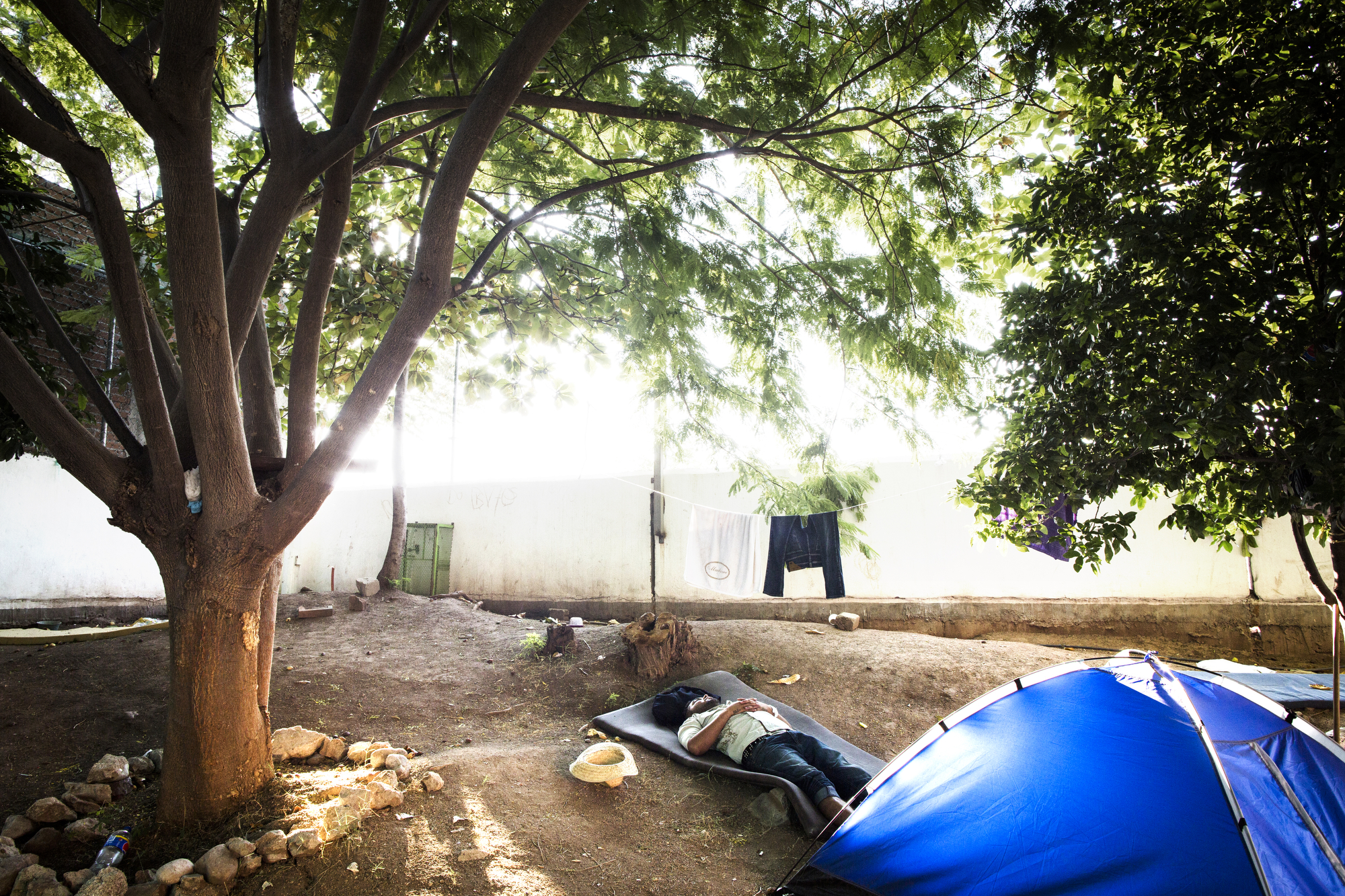
Hermanos en el Camino migrant shelter in Ciudad Ixtepec, Mexico.
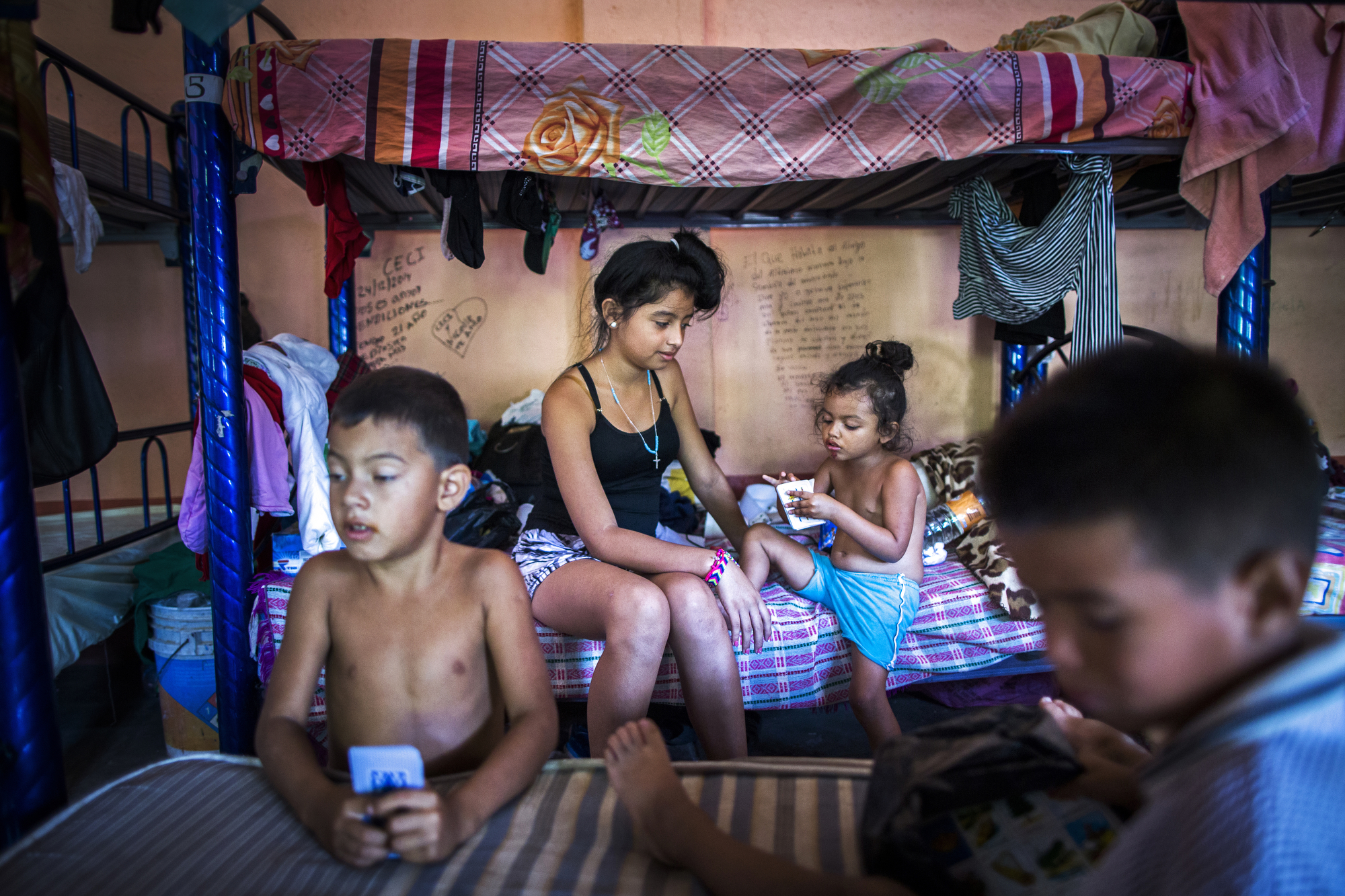
Siblings six year old Luis Danny Pérez, twelve year old Naamá Pérez and three year old Kimberly Julieth Medina, play cards with another child fleeing violence, Anthony Douglas Ponce Barahona, in the women's dormitory at the Hermanos en el Camino migrant shelter in Ciudad Ixtepec, Mexico.
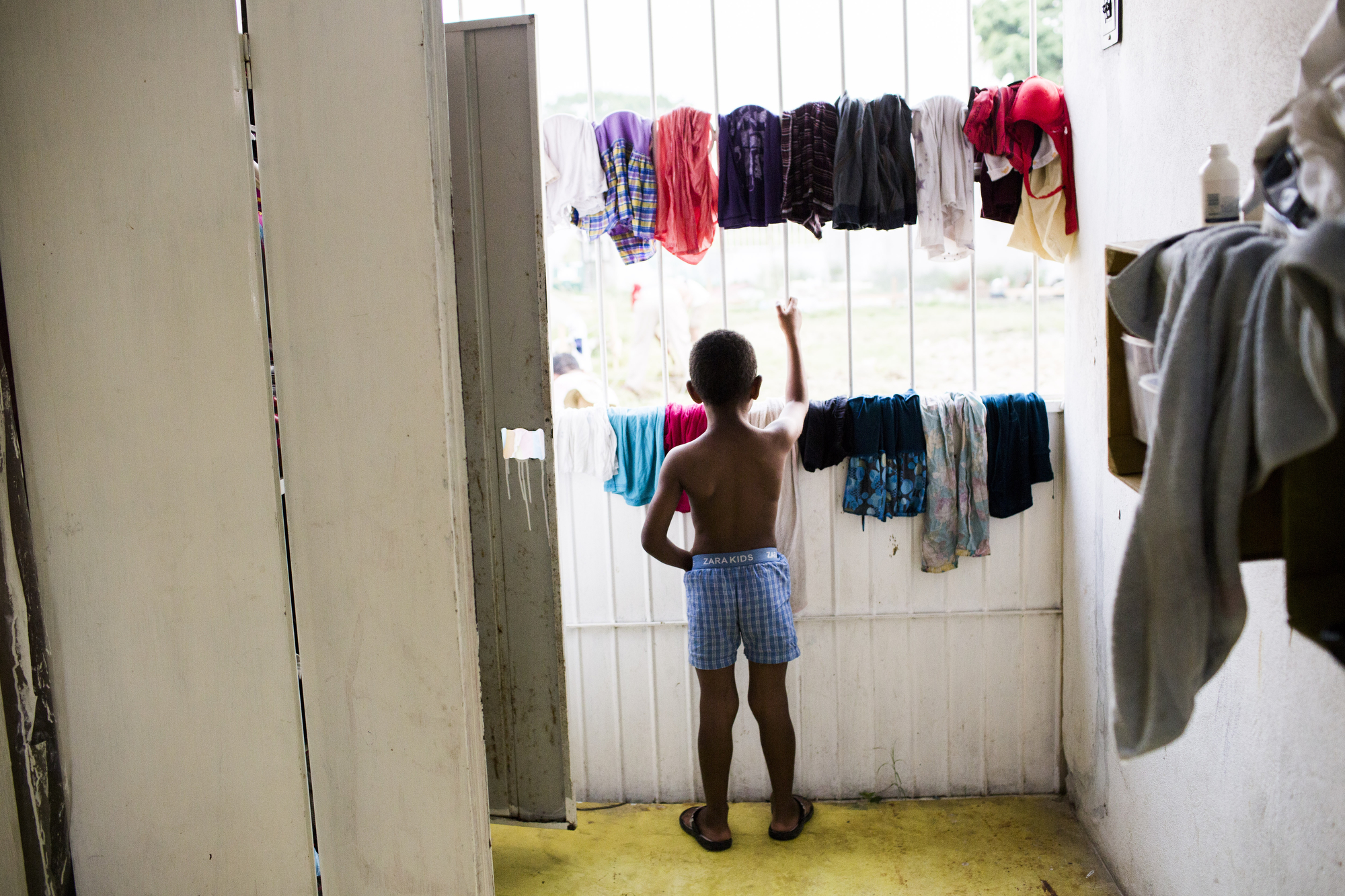
Central American migrant shelter "Los 72" in Tenosique, Mexico.
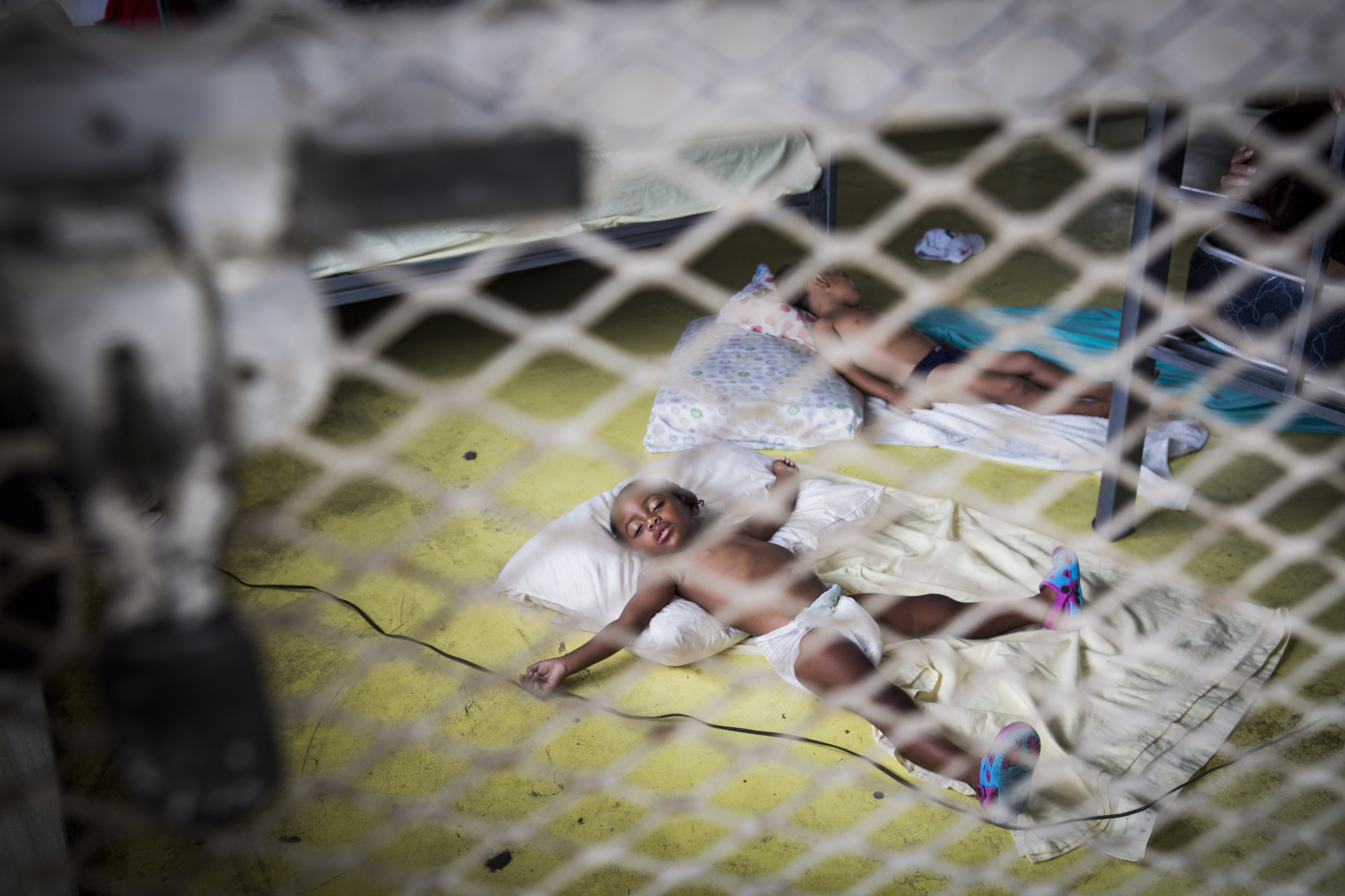
Central American migrant shelter "Los 72" in Tenosique, Mexico. Darling Jimenez, 2 years old. The Maras in Ceiba, Honduras, killed her father and the family fled.
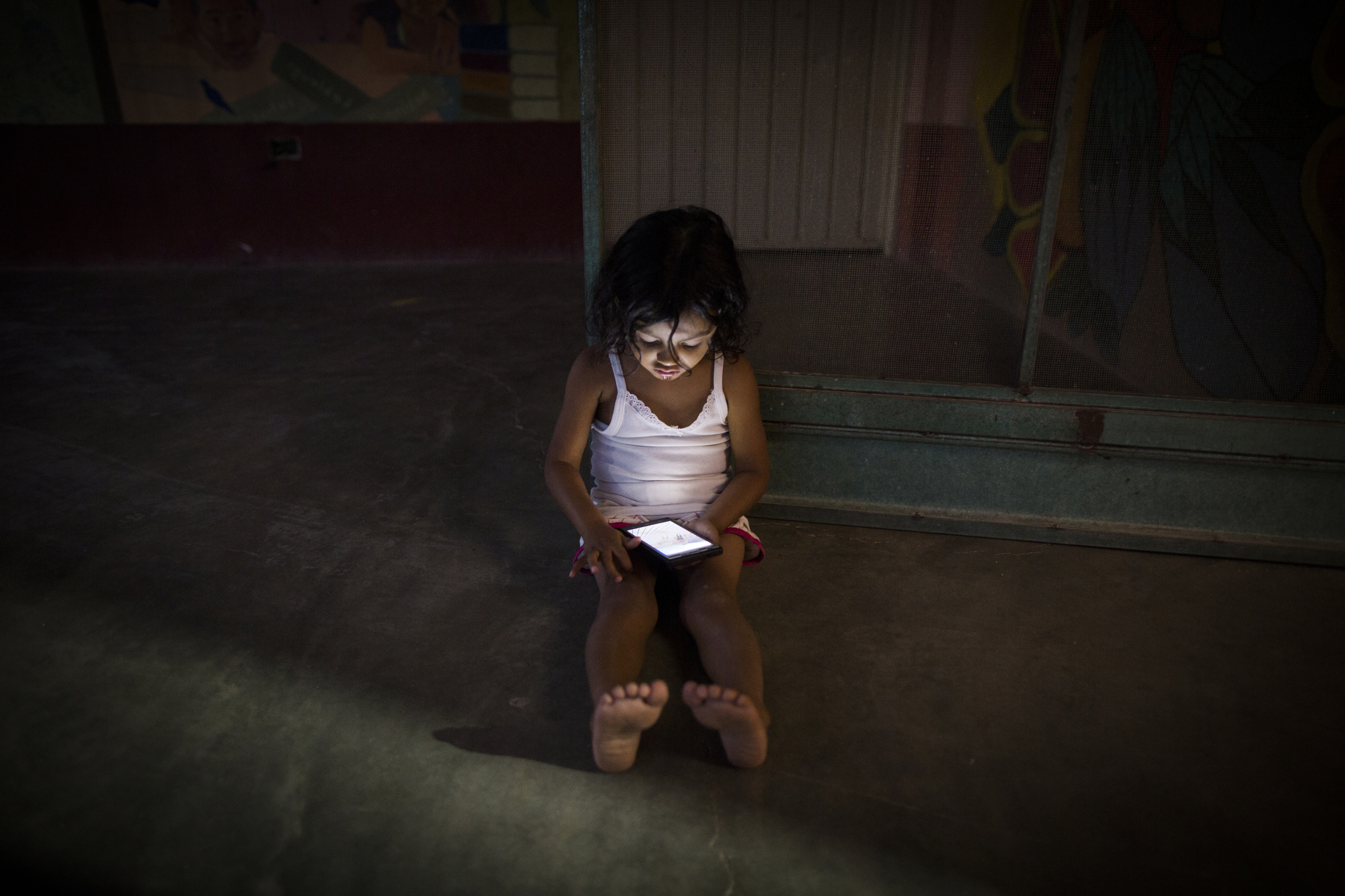
Three year old Kimberly Julieth Medina plays with her mother's iPhone outside the women's dormitory at the Hermanos en el Camino migrant shelter in Ciudad Ixtepec, Mexico. Pérez and her family were forced to flee Honduras after her 14-year-old brother Anthony Jalibeth Pacheco was murdered by gangs last year.
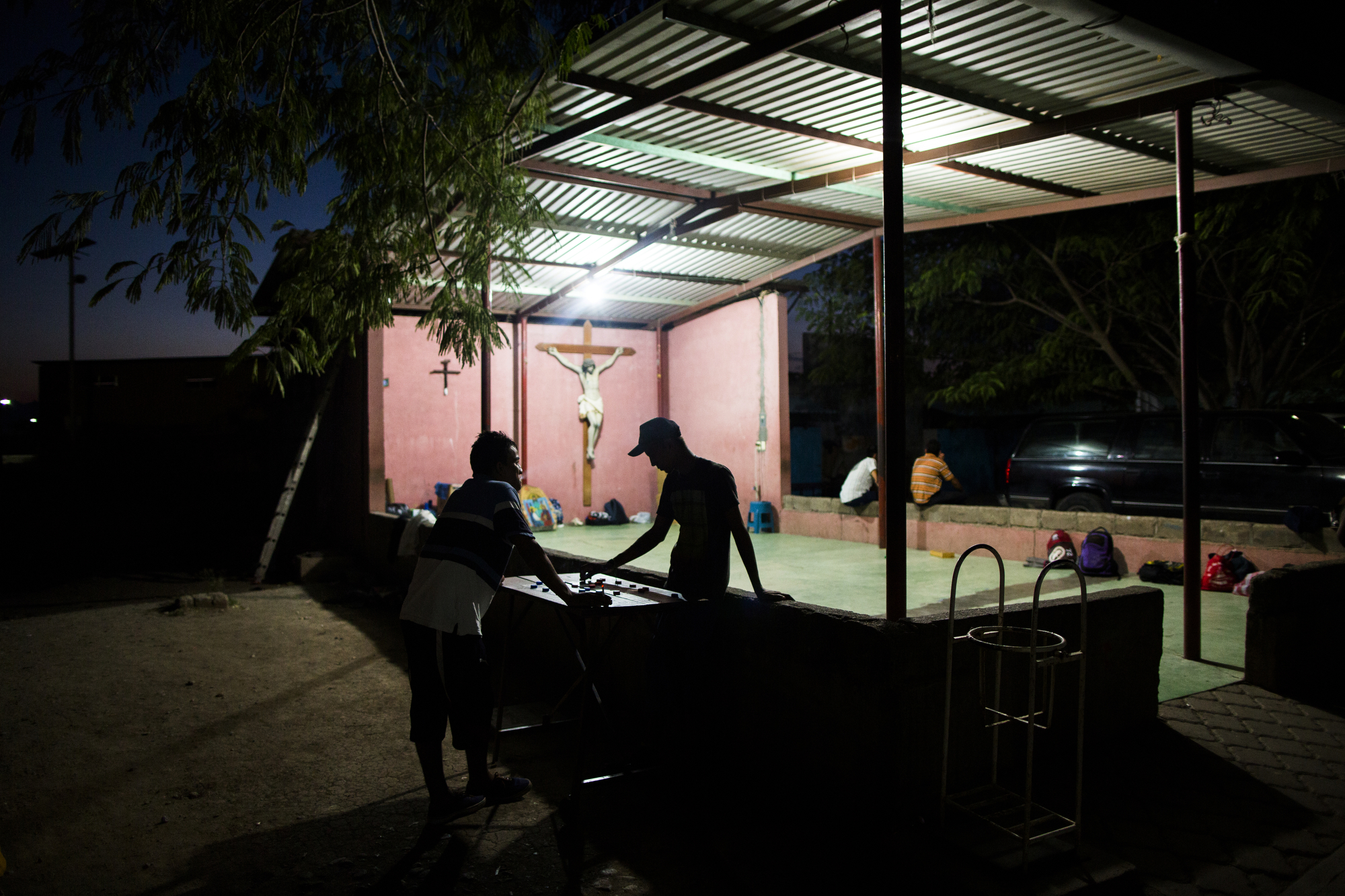
Hermanos en el Camino migrant shelter in Ciudad Ixtepec, Mexico.
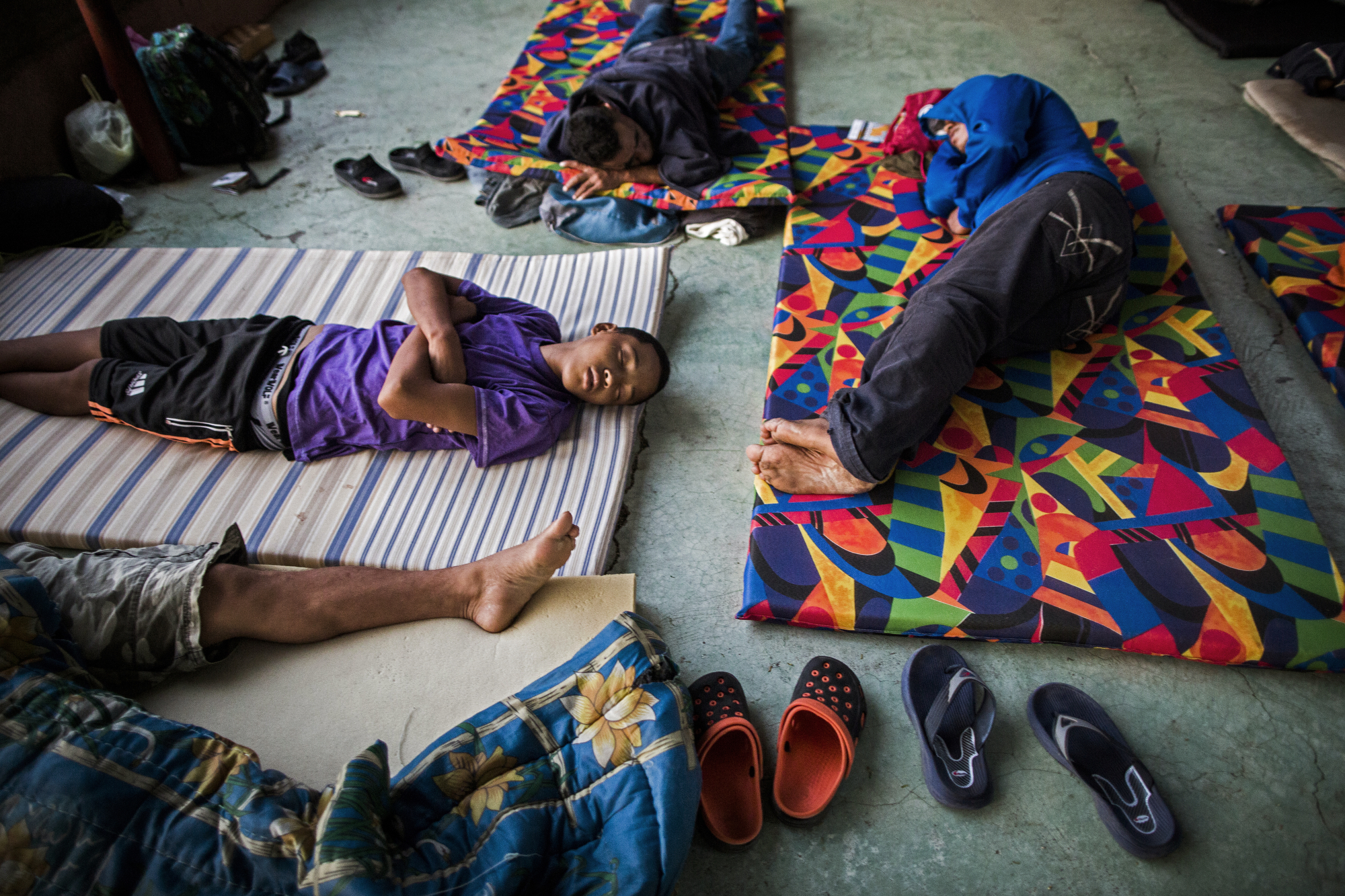
Morning at the Hermanos en el Camino migrant shelter in Ciudad Ixtepec, Mexico.
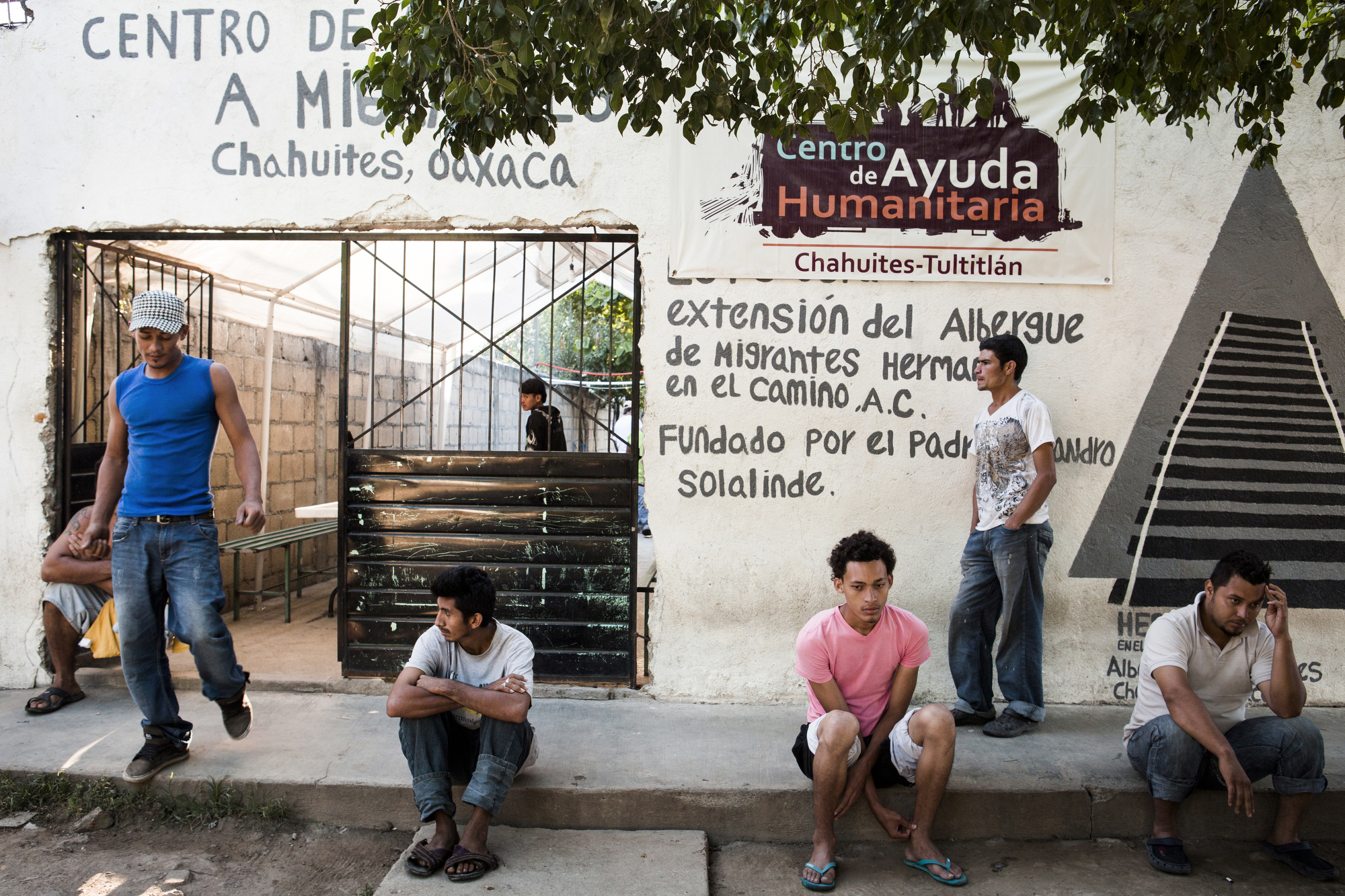
Morning at the Centro de Ayuda Humanitarian migrant shelter in Chahuites, Mexico, one of the most dangerous areas along the southern migrant trail, with migrants forced to walk hundreds of kilometers through the woods and risk assault as the trains in the area are highly monitored by officials.
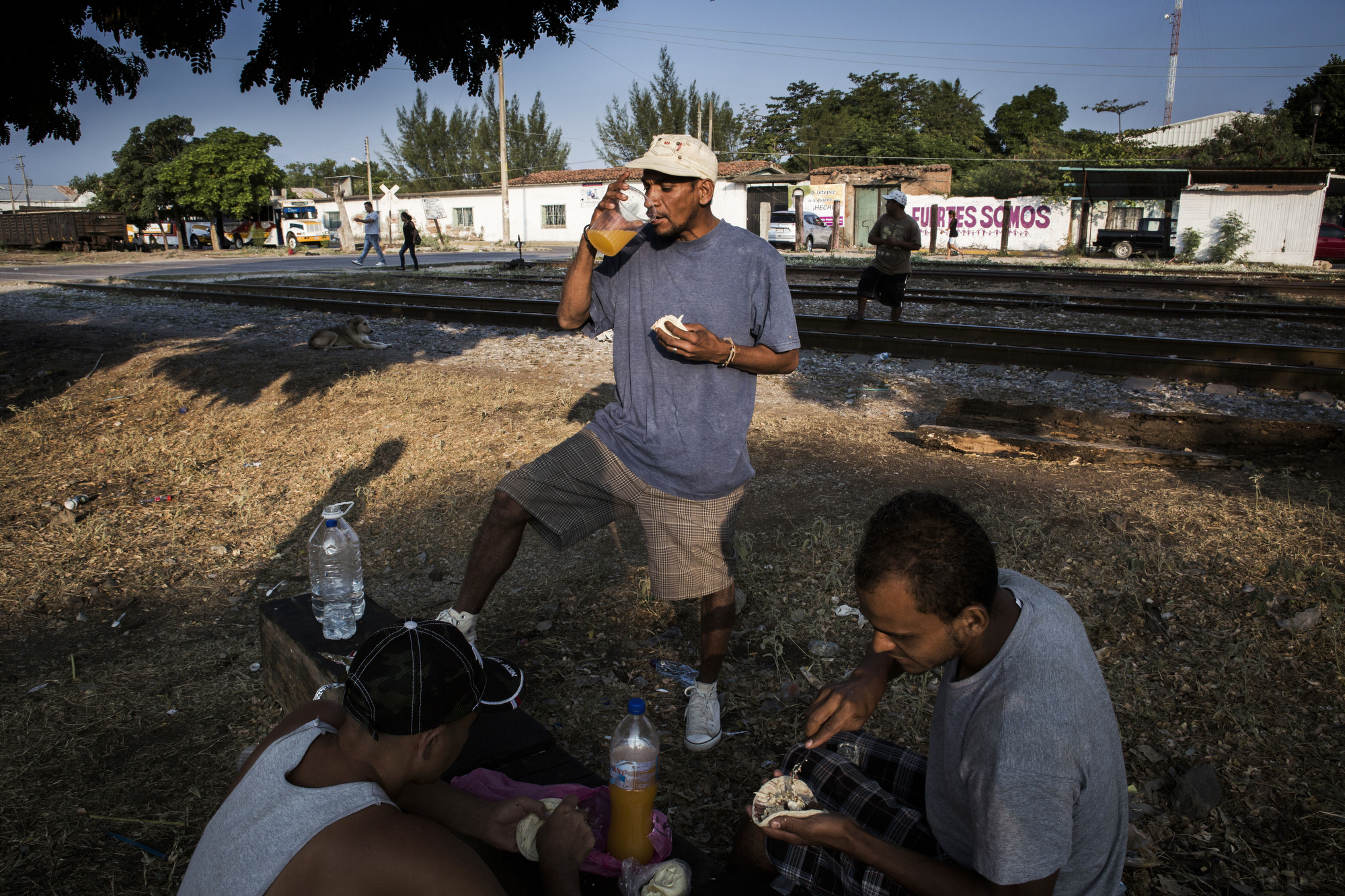
Migrants have breakfast by the train in Ciudad Ixtepec, Mexico.
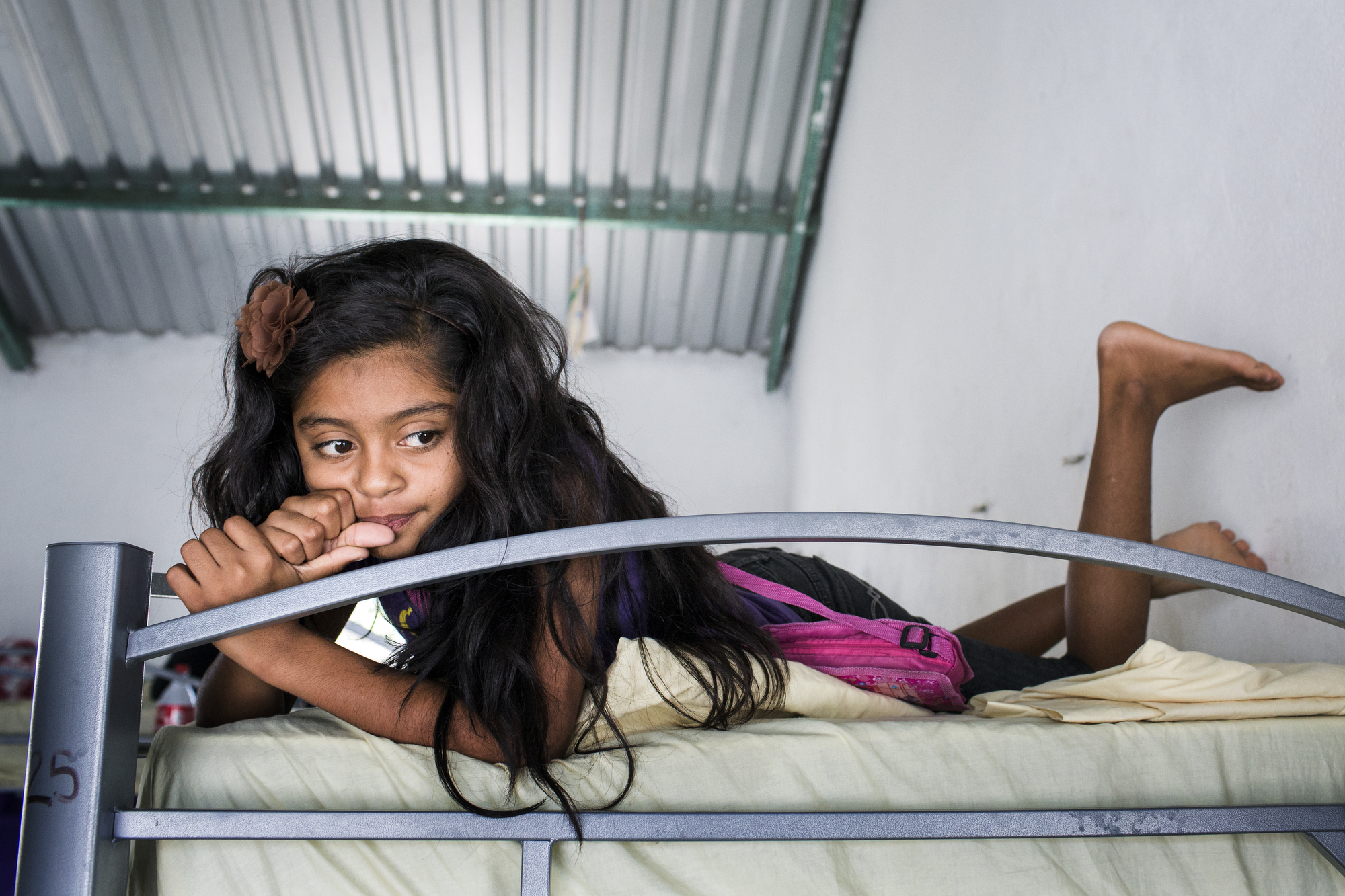
Central American migrant shelter "Los 72" in Tenosique, Mexico. Marbeling Funez 7, Isla de la Bahia, Honduras. Her mother: "Maras were always behind him, but he did not wanted to work with them, we had to moved to Ceiba and they would come looking for him, so we moved again and they follow us there, so he decided to go to the U.S. he tried 2 o 3 times and he finally managed to cross over. After two years I joined him there leaving the kids behind. At the beginning I could not find much work, I did massages, clean houses and everything I need to do. My husband then got ill and they found that he had a brain tumor; the doctors told us that the operation was a high risk and with medication they managed to stabilize him, so I was the only person working. In hospital they found that he was also HIV and I realized that I was also HIV my husband pass me the virus. I felt so along without my kids so we came back to Honduras, but we did not had much money saved. But in Honduras we could not get the medicine for the HIV and we were feeling really bad, the doctor humiliate us in front of people. We try to work but they when my husband got ill, his employers realized he was HIV and they kick them out of work, and we had to move to a different area again. So we decided to go back to the U.S.
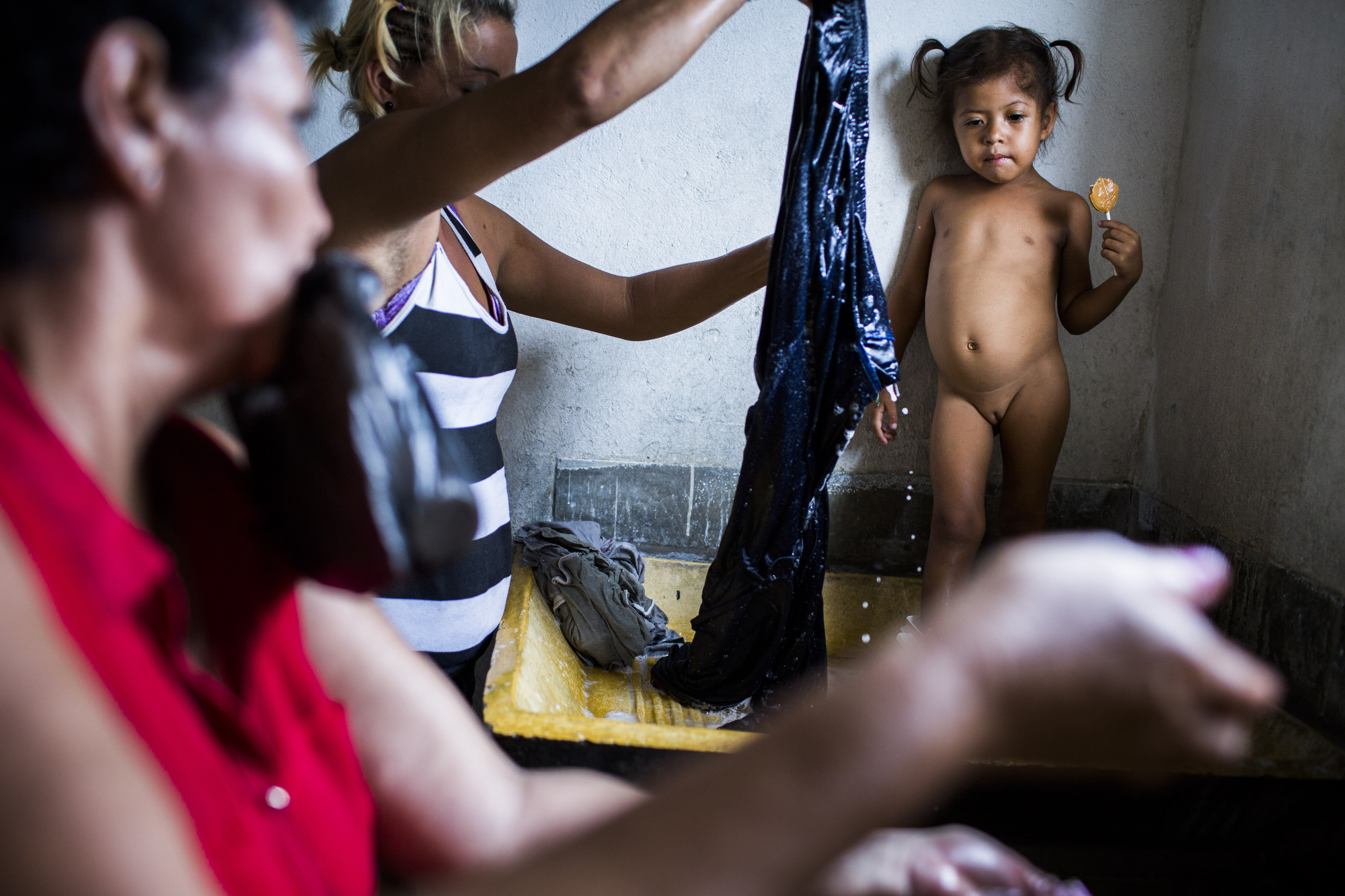
Central American migrant shelter "Los 72" in Tenosique, Mexico. Bentis Yamilet Paz is 33 years old. Genesi Yamilet Medina Paz 3 years old, 33 years old. They had to leave because the Mara 18 killed Velquis brother. The Maras are in control of the area where they live in San Pedro Sula, Honduras. That is why they left 3 months ago. “The Maras are everywhere and they follow us where ever we go, we can’t escape, that is why we don’t leave this shelter. They are going to the U.S, where they have family, the problem is that they do not know their contact address or phone number.
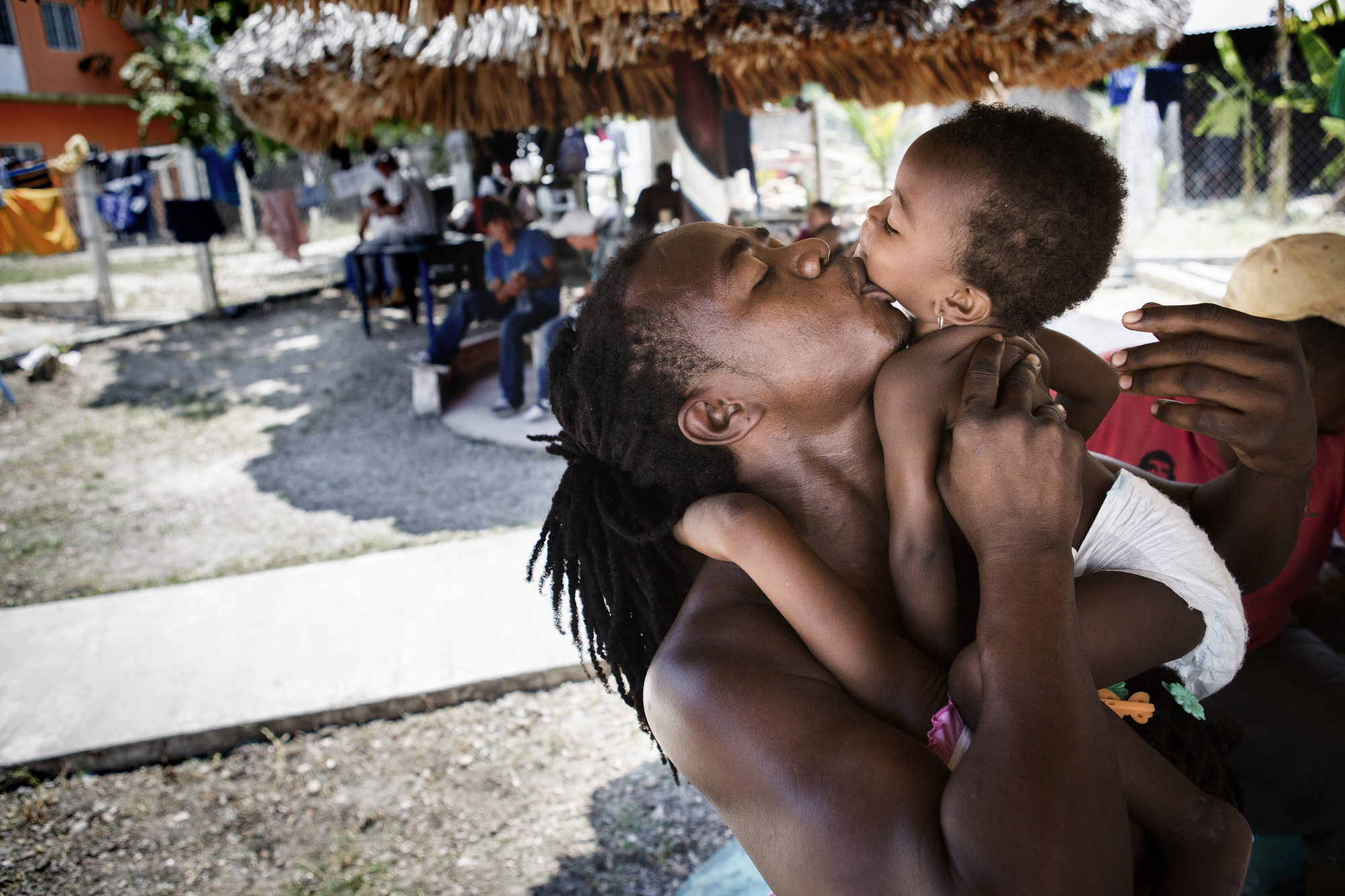
Central American migrant shelter "Los 72" in Tenosique, Mexico.
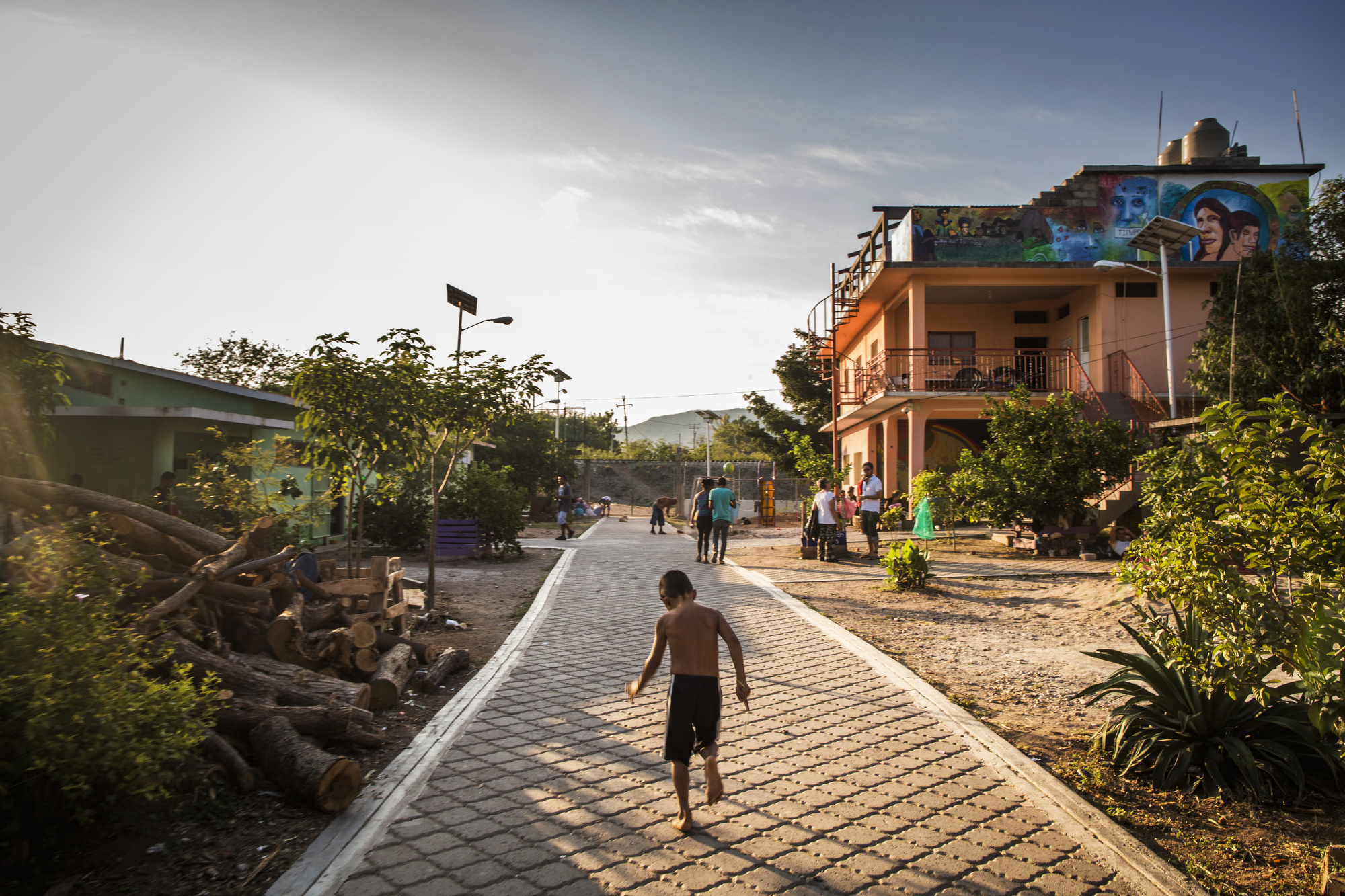
Six year old Luis Danny Pérez at the Hermanos en el Camino migrant shelter in Ciudad Ixtepec, Mexico. Pérez and his family were forced to flee Honduras after his 14-year-old brother Anthony Jalibeth Pacheco was murdered by gangs last year.
PROJECTS
Children Do Not Migrate, They Flee
By Katie Orlinsky
When a massive influx of Central American children streamed across the U.S.-Mexican border in 2014, it sparked a political crisis, and a heated debate about the causes of this “surge.” U.S. politicians argued that the children were coming merely for economic reasons (that is, simply to take American jobs), rather than face the complicated reality that we have a refugee crisis on our very own doorstep. Honduras, El Salvador and Guatemala have the highest homicide rates in the world. Central American children are the victims of life-threatening war, gang violence and poverty on a daily basis. The journey through Mexico to the “safety” of the United States is rife with dangers like kidnapping, rape and robbery, often times deadly, and controlled by criminals and gangs. Central American children and families have no other choice. As an official running a child migrant shelter in Guatemala said, “children do not migrate, they flee.” Currently, there is a massive U.S.-funded crackdown by Mexican authorities against Central American migrants, yet it has done little to stem the flow of migrants to the U.S., succeeding only in making the journey more lucrative for smugglers and more dangerous for migrants than ever before.
Publications
The Refugees At Our Door, The New York Times
